Exploring Freedom Foil Boards for Kiteboarders
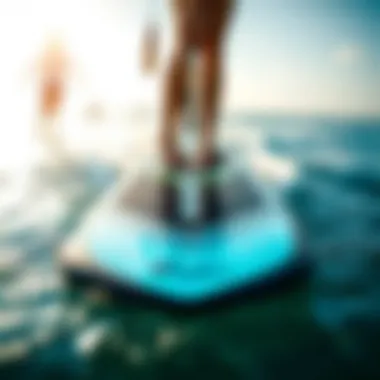
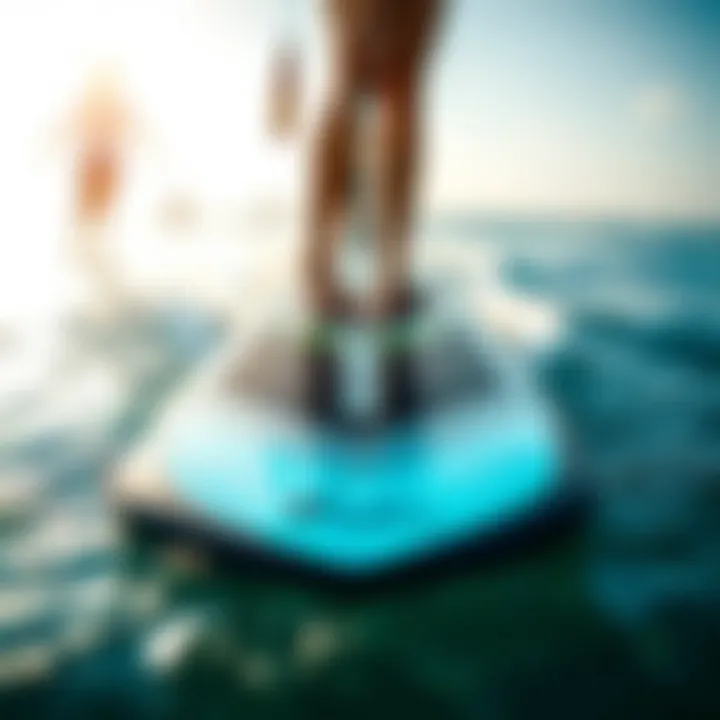
Intro
As kiteboarding continues to evolve, enthusiasts are constantly on the lookout for ways to amplify their experience on the water. This is where freedom foil boards come into play, offering a unique twist on traditional kiteboarding. These boards are crafted not just for movement across water but for the art of flying above it. This guide dives into the design, functionality, and the intricacies of using foil boards, making it a must-read for both fresh kiteboarders and seasoned pros aiming to take their skills to new heights.
Whether you’re a newcomer eager to ride the wind or an expert seeking the latest tech advancements, the world of foil boards has something valuable for you. In this article, we will dissect the latest gear trends, explore essential riding techniques, and discuss the pros and cons of this innovative equipment. With this comprehensive viewpoint, we aim to equip you with knowledge that not only enhances your performance but transforms your entire kiteboarding experience.
Equipment Insights
Latest Gear Reviews
The market for foil boards has seen significant growth. The emphasis now leans towards performance and innovation. Brands like Naish, Slingshot, and Duotone are leading the pack, constantly improving their designs to enhance user experience. A common thread among the most sought-after boards is their lightness coupled with strength. It's like having the best of both worlds; you can glide effortlessly while maintaining depth and stability.
Among the latest models, the Naish Hover Series stands out for its unique hydrofoil design that offers enhanced lift and speed. It delivers a smooth ride that caters to various skill levels, which is great for learning tricks or simply cruising along. Similarly, the Slingshot Sink or Swim design promises an easy take-off, allowing beginners to gain confidence quickly.
While these boards offer various benefits, the importance of matching the right foil to the rider's skill level cannot be understated. Newcomers often make the mistake of choosing the flashiest board only to struggle with balance and controls, which can lead to frustration.
Essential Gear Maintenance
Caring for your foil board can be as crucial as choosing the right model. Regular TLC can extend the life of your equipment and improve your overall performance.
Here are some upkeep tips:
- Rinse After Use: Saltwater and sand can be damaging. Give your board a good rinse with fresh water after every session.
- Check for Dings: Inspect your board regularly for scratches or damage. Addressing them promptly can save you from bigger repairs down the line.
- Storage Matters: Keep your board out of the sun when not in use. Prolonged exposure can warp the material, rendering it less effective when it’s time to hit the water.
Technique Exploration
Beginner Techniques
For those just beginning their journey, understanding the basics of foil boarding is essential. Start with a kite control exercise on the land to build your confidence before hitting the water. Learning how to maintain a steady flight path can bring clarity, especially when you’re balancing on the foil. You’d want to practice in lighter wind conditions to avoid being overwhelmed.
Some techniques to get off the ground include the following:
- Practice on a flat surface: This helps with balance before moving to the water.
- Use smaller kites: Smaller kites can give you better control initially.
Advanced Maneuvers
Once you’ve grasped the basics, it’s time to elevate your skills. Riders looking to push the boundaries can adopt maneuvers like the “Tack Turn” or “Back Flip”. These moves demand a solid understanding of wind dynamics and board control.
- Tack Turn: This involves making a sharp change in direction while retaining momentum, essential for fluid riding.
- Back Flip: This is a way to show off skill, requiring a strong vertical take-off followed by a controlled descent.
As with any sport that pushes limits, always respect your abilities. Practice these maneuvers safely, and don’t rush the learning curve. Knowing when to pace yourself can set the foundation for long-term success.
"Kiteboarding is not just about the thrill; it's about the connection you build with the wind and water."
Intro to Freedom Foil Boards
Understanding freedom foil boards is essential for any kiteboarder aiming to enhance their riding experience. These boards have become increasingly popular, providing a unique approach to navigating waters with speed, grace, and maneuverability. As kiteboarding has evolved, so have the tools to engage with it. This section lays the foundation for a deeper appreciation of foil boards' design, functionality, and relevance in today's kiteboarding scene.
Defining Freedom Foil Boards
Freedom foil boards are essentially kiteboards equipped with a hydrofoil, which allows riders to skim over the water's surface rather than being held back by it. This fascinating blend of technology and sport creates an almost surreal experience for the rider. One might say riding a foil board is akin to flying across the water, offering a smooth and elevated glide that is nearly unmatched.
Foil boards consist of a board section and a vertical fin known as a foil, which juts out beneath. When the rider gains speed, the foil generates lift, causing the board to rise above the surface. This unique design not only reduces drag but enhances performance, making it a game changer for both novices and seasoned riders alike.
The Evolution of Foil Boards
The journey of foil boards is a testament to innovation within the sport of kiteboarding. Initially, kiteboards were simple and designed for stability on water. However, as kiteboarding gained traction, so did the demand for enhanced performance.
Foil boards emerged in the early 2000s, inspired by the principles of hydrodynamics. Over the years, advancements in materials and design have significantly transformed these boards.
- Early Designs: Initially clunky and heavy, early foils were often cumbersome and not user-friendly.
- Modern Innovations: Today's designs are lightweight, often crafted from materials like carbon fiber, making them easier to maneuver. The shape of the foils has also evolved, enhancing lift and control.
- Hybrid Forms: In recent years, the fusion of various styles, including paddleboarding and windsurfing, with foil boarding has broadened the appeal and usability across different water sports.
In summary, the evolution of freedom foil boards mirrors the growth of kiteboarding itself—dynamic and ever-changing. As the technology marches forward, riders find themselves increasingly captivated by these boards capable of enhancing their freedom on the water.
Understanding the Design of Foil Boards
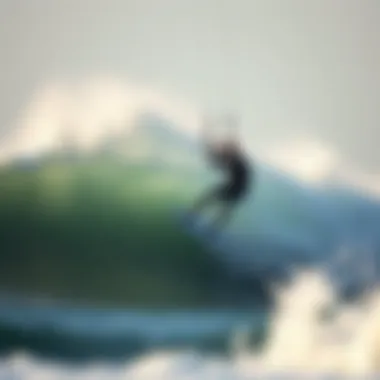
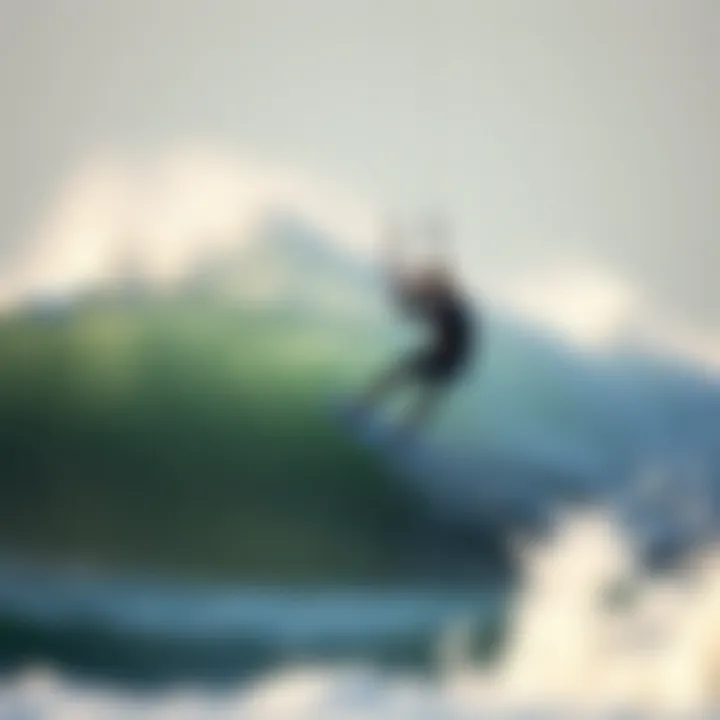
The design of foil boards plays a pivotal role in kiteboarding, acting as the very foundation upon which speed, control, and overall performance hinge. As kiteboarders seek new thrills and experiences in the water, understanding these designs becomes not just an option, but a necessity. Different elements such as size, shape, and materials all contribute to the unique dynamics of each board. Moreover, they can affect how the board performs in various water conditions, which makes it crucial for riders to grasp these concepts thoroughly.
Key Components of a Foil Board
When examining the key components of a foil board, several elements stand out. The board itself is where all action begins. Usually, it comprises a wide, flat deck designed for balance while riding. The foil—made up of a mast, wings, and fuselage—plays a significant part. The mast connects the board to the wings, raising the rider above the water's surface. The size and shape of the wings affect lift and drag, making it critical to choose wings that align with riding style and skill level.
Riders should also consider the fuselage length. A longer fuselage typically provides more stability, while a shorter one can lead to faster turns. It’s a delicate balance of components that results in different riding styles: racing, surfing, or freestyle. Here’s a neat summary of the key parts:
- Deck: The platform for the rider, important for foot placement and stability.
- Mast: The vertical piece that connects the board to the foil wings.
- Wings: Critical for lift and speed, available in various shapes and sizes.
- Fuselage: The arm that connects the mast to the wings, influencing handling.
Material Choices and Their Impact
The material used in the construction of foil boards has a profound impact on the overall performance and durability of the board. High-quality materials often lead to lighter boards, which enhance speed and agility. Typically, manufacturers use materials like carbon fiber, fiberglass, and epoxy resins for the construction.
- Carbon Fiber: Known for being incredibly strong yet lightweight, it's the go-to for many professional riders who want speed and precision.
- Fiberglass: Offers good strength at a lower cost, making it popular among beginners who are still finding their rhythm on the water.
- Epoxy Resins: Used in various constructions, these resins increase durability and help maintain the integrity of the board under strain.
With correctly chosen materials, a rider not only enhances their experience but also reduces the chances of damage that come with a tough landing or crashing through waves. The connection between material choices and performance can’t be overstated; it's about finding the balance that suits personal style.
Foil Shapes and Profiles Explained
Diving into the shapes and profiles of foils is akin to exploring the nuances of a fine art. The profile of a foil determines how it interacts with the water. For example, a profile with a more pronounced curve will generate lift more readily but might also lead to more drag. Conversely, a flatter profile could save on energy but may require more speed to take off.
Common foil shapes you might encounter include:
- High Aspect Ratio: Offers better lift-to-drag ratio, ideal for racing.
- Low Aspect Ratio: Provides more stability and speed at lower levels, great for beginners who are still navigating their way.
- Cambered Wings: Promote better performance in tricky conditions, allowing for a smoother ride.
Each shape serves its purpose, and understanding them can elevate performance and safety on the water. As with any other aspect of kiteboarding, it all boils down to personal preference and environmental factors.
"Selecting the right components of a foil board can drastically change how a kiteboarder interacts with the water, making every ride a unique experience."
This deep dive into the design of foil boards not only enriches knowledge but also impacts the decision-making process for current and future kiteboarders. It ensures that riders choose equipment that genuinely aligns with their ambitions and skills.
Advantages of Using Freedom Foil Boards
When it comes to kiteboarding, riders constantly seek that extra edge to enhance their experience and performance on the water. Freedom foil boards, with their innovative design and capabilities, have become a game-changer in this sport. In this section, we’ll uncover various advantages that freedom foil boards offer, emphasizing speed, maneuverability, and adaptability to different water conditions.
Enhanced Speed and Performance
Freedom foil boards are engineered to provide an exhilarating speed advantage. The foil concept transforms the riding experience; instead of simply gliding on the surface of the water, the board lifts above it. This lift leads to minimal drag, allowing kiteboarders to zoom across the water.
Many riders report that, once accustomed to this sensation, they feel like they are flying. The increased speed can also boost confidence, aiding in learning new tricks or extending riding sessions. No longer does the wind have to be howling to experience thrilling speeds; even lighter winds suffice with a foil board.
- Speed Benefits:
- Improved lift leads to reduced water resistance.
- Cruising at higher speeds enhances overall fun and enjoyment.
- Less effort is needed to maintain momentum.
Improved Maneuverability
Another standout benefit of freedom foil boards is their exceptional responsiveness and agility. The design permits tighter turns and slicker transitions, enhancing the overall riding experience. This is mainly attributed to how a foil board is affected less by the surface conditions of the water.
Unlike traditional boards that can be sluggish especially in choppy waters, the uplifted design allows for seamless navigation through waves and gusts. The rider’s capability to control speed and direction so precisely translates into a greater sense of freedom, especially in crowded or shifting environments.
- Maneuverability Perks:
- Enhanced control leads to smoother trick execution.
- Adjusting to waves and wind becomes more intuitive.
- Riders can push their limits more confidently.
Experience on Different Water Conditions
One of the most appealing aspects of using freedom foil boards is their versatility in various water situations. Whether you’re facing flat, glassy waters or rough, turbulent waves, these boards can adjust and perform admirably. This multifaceted ability means that riders can venture into previously unthinkable territories.
With a foil board, a kiteboarder can enjoy the thrill of riding even when conditions seem less than ideal. This opens up countless opportunities for exploration, making it more feasible to seek out new locations to ride.
- Adaptability Features:
- Efficient performance in both smooth and choppy conditions.
- Capability to ride in shallower waters without worrying about hitting the bottom.
- Freedom to experiment with more diverse riding styles.

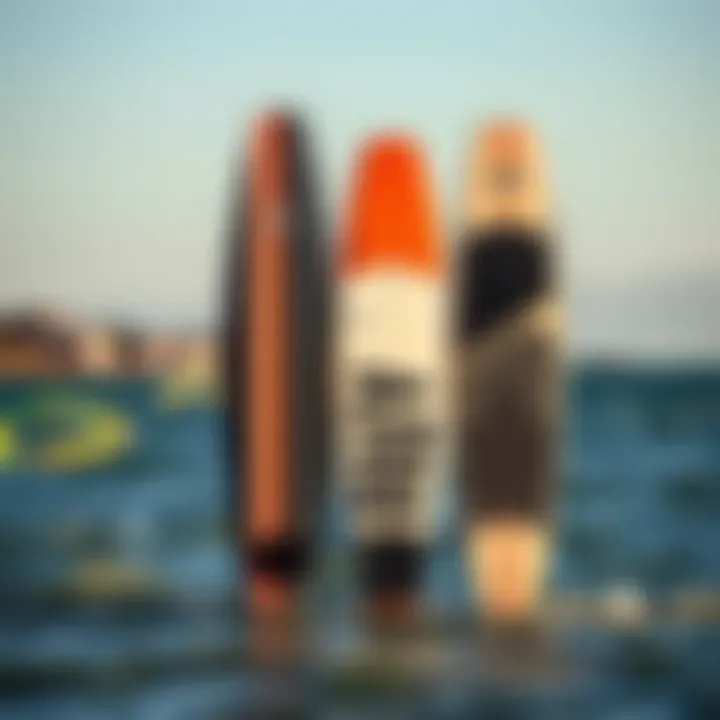
"A foil board isn't just about surfing the waves; it's about finding freedom in each and every swell."
Challenges and Disadvantages
Understanding the challenges and disadvantages associated with freedom foil boards is vital for kiteboarders who wish to make informed decisions about their equipment. While foil boards present an innovative way to enhance the kiteboarding experience, they come with certain drawbacks that riders must be prepared to navigate. Discussing these challenges allows for a more balanced view of freedom foil boards and ensures that enthusiasts are not caught off guard when they hit the water.
Learning Curve and Skill Requirements
The learning curve for foil boards can be steep, especially for those who are accustomed to traditional kiteboards. Mastering a foil board requires not just balance but a good understanding of how to control your kite and manage speed effectively. Unlike standard boards, which allow for a more forgiving ride, foil boards lift above the water surface, thus creating an entirely different dynamic. Riders must develop a keen sense of timing and agility — having the foil take off at the right moment can sometimes feel like trying to land a trick on a skateboard that's wobbling beneath you.
For beginners, the initial experience may be frustrating. It’s not uncommon for new users to struggle with maintaining stability or mastering the art of turning without crashing. Practicing in a safe environment with moderate wind conditions is recommended before venturing into more challenging areas. Here are a few points to ponder when considering the learning aspect of foil boards:
- Focus on Control: Developing fine motor skills necessary for controlling the board is paramount.
- Kite Handling: Understanding how your kite interacts with the winds while riding gives you a significant advantage.
- Practice Patience: Be prepared for the possibility of crashing — frequent falls are part of the learning process.
Limitations in Specific Conditions
Not all bodies of water are suitable for foil boarding. Certain conditions present challenges that can hinder your experience. High winds can make it difficult to maintain flight stability, while flat water is generally preferred for learning and practicing. Here are some practical considerations about specific conditions:
- Wind Speed: Inconsistent winds play a large role; too much wind and controlling the foil becomes tricky, while too little may not provide enough lift.
- Water Surface: Choppy waters are generally a no-go for foil boards since they thrive in smooth conditions.
- Obstacles: Navigating around objects like buoys or other watercraft becomes a delicate task, adding another layer of complexity.
Maintenance and Durability Issues
Foil boards, while engineered for performance, can face maintenance hurdles that might surprise the unprepared rider. Proper upkeep is essential to prolong a board's lifespan and efficiency. Here are some common maintenance issues you might face:
- Wear and Tear: Frequent exposure to saltwater and sand can lead to corrosion, particularly on metal parts of the foil.
- Board Integrity: Inspecting for any damage incurred during rides is crucial; a chipped board could not only affect performance but also present safety risks.
- Routine Checks: A periodic examination of the foil's mounting system and components is necessary to prevent malfunctions.
Maintaining a freedom foil board isn’t just about cleanliness; it’s about ensuring that all components work harmoniously to provide an efficient ride.
"A well-maintained board not only performs better but also significantly enhances your riding experience."
Selecting the Right Freedom Foil Board
Choosing the right foil board can make or break your experience out on the water. For kiteboarders, it's not just about functionality but also about how it feels when you’re gliding over the waves. Getting it right takes some effort, but it ensures you’re making the most of your time on the water. Understanding the nuances involved in selecting a freedom foil board enhances your performance and pleasure. Let's explore the key aspects that will shape your decision.
Industry Standards and Terminology
Navigating the jargon in the kiteboarding world can feel like wandering through a maze. Industry standards exist to ensure that riders can communicate effectively and make informed choices about their equipment. Terms like "aspect ratio" and "lift" are crucial when discussing foil boards.
- Aspect Ratio: This is essentially the length of the foil compared to its width. A higher aspect ratio typically offers more speed but can compromise maneuverability. For riders seeking to cut through the water efficiently, this could be your go-to.
- Lift: This term refers to the foil's ability to elevate the board out of the water. A board that excels in lift will help kiteboarders achieve that exhilarating "flying" sensation.
Familiarizing yourself with these terms helps establish a common language between you and your fellow kiteboarders and instructors. It's like learning the rules of the road before you get behind the wheel.
Size and Weight Considerations
When it comes to selecting a foil board, size matters—a lot. It's not just about what looks good or fits in your car; the dimensions of a foil board can significantly affect how it performs.
Weight is another vital factor. Heavier boards might feel sturdy but could hinder your ability to ride swiftly or execute tricks. A lighter board can provide better responsiveness and ease of maneuverability.
- Board Length: Shorter boards generally allow for better tricks and maneuverability, while longer boards can contribute to stability and speed. Consider your comfort zone and riding style when making this choice.
- Board Width: Wider boards offer more buoyancy, which is especially useful for beginners or those looking to cruise at lower speeds.
- Weight Rating: Not every board is crafted equal when it comes to supporting different rider weights. Always consult manufacturer guides designed for rider weight and size to ensure a match.
Personal Preferences and Riding Style
Your shooting star on the water is only as good as your personal style. Picking a foil board that complements your riding style is essential for optimal performance. Are you a thrill-seeker craving high-speed rides, or do you prefer a leisurely cruise across serene waters?
- Freestyle vs. Freeride: Freestyle riders may want a shorter board for tricks, while freeriders might prioritize stability and longer distances.
- Wave Riding vs. Flat Water: If you find joy in waves, look for boards with specific designs for added lift and performance in rough conditions.
Ultimately, investing time to reflect on what brings you joy and pushes your limits can lead to better performance. It's not just about the gear; it’s how it resonates with your unique style and preferences.
"The right board is not just an investment; it is an extension of who you are on the water."
Foil Board Maintenance and Care
Maintaining a foil board is crucial for both performance and safety. Like any piece of equipment used in dynamic conditions, regular care prevents degradation and extends the lifespan of your gear. For kiteboarders, understanding the nuances of maintenance can make the difference between a flawless ride and a frustrating experience. Here, we will delve into effective cleaning strategies, proper storage techniques, and essential periodic checkups for repairs.
Cleaning and Storage Techniques


Keeping your foil board clean is more than just a cosmetic concern. The ocean, lakes, and rivers where kiteboarding takes place can introduce salt, sand, and debris, all of which can impact the board's integrity over time. After each session, it's best to rinse your board with fresh water to remove salt and sand. This simple act helps retain the material properties of the board and prevents corrosion on the hardware.
To store your foil board, follow these guidelines:
- Dry it Off: Before putting it away, ensure the board is completely dry. Water left on the surface can lead to molding or deterioration.
- Temperature Control: Keep the board in a cool, dry place. Avoid leaving it in direct sunlight for extended periods, as UV rays can damage the materials.
- Use Padding: Consider using padding or a cover specifically designed for your board when transporting. This precaution safeguards against dings and scratches that can occur during transit.
- Store Vertically: If space allows, store the board upright to reduce pressure on the fins and foil attachments.
Implementing these cleaning and storage techniques can enhance your board's performance significantly, ensuring you’re ready to hit the water at a moment’s notice.
Periodic Checkups and Repairs
Regular checkups are indispensable to maintaining the operational readiness of your foil board. You wouldn't ignore a flat tire on your car, and the same logic applies here. Consider adopting a maintenance schedule to assess the following key areas:
- Foil and Fins: Examine these components closely for signs of wear or damage. Cracks or chips can significantly impair performance and may lead to accidents.
- Hardware Tightness: Loose screws or mounts can lead to bigger issues down the line. Regularly check and tighten all bolts and screws to ensure they’re secure.
- Surface Integrity: Look for any delamination or bubbling on the board's surface. Addressing these issues early can prevent further complications and reduce costly repairs.
If repairs are necessary, don’t fret. Many kiteboarding shops offer services tailored to foil boards, but you can also tackle minor issues yourself. Here are a few tips for DIY repairs:
- Epoxy Kits: For minor dings and scratches, an epoxy repair kit can work wonders. Ensure the area is clean before applying.
- Replacement Hardware: If a screw is stripped or a fin is damaged, replacements are often readily available at specialty shops or online.
"Regularly maintaining your foil board not only enhances its longevity but also ensures safety on the water. Don’t wait for problems to arise; be proactive!"
For more in-depth guidelines, consider resources such as Wikipedia or Britannica.
The Future of Freedom Foil Boards in Kiteboarding
The landscape of kiteboarding is evolving rapidly, and at the forefront of this evolution are freedom foil boards. As kiteboarders continue to seek improved performance and enhanced experiences on the water, understanding the future of these boards becomes increasingly important. This section will dive into what advancements may lie ahead and how they might affect both the sport and its enthusiasts.
Innovations in Technology and Design
The future of freedom foil boards teems with potential innovations that promise to redefine how kiteboarders engage with the water. Manufacturers are investigating lightweight materials that combine strength and flexibility. Carbon fiber, for example, is a favorite. Designers are also experimenting with new shapes and profiles that optimize aerodynamic properties. As technology advances, we are likely to see boards that reduce drag even further and improve lift efficiency.
A significant avenue of innovation is the integration of smart technology into foil boards. Imagine boards equipped with sensors that analyze performance metrics in real-time. Riders could adjust their techniques based on immediate feedback regarding speed, stability, and maneuverability. Such technology could usher in a new era of personalized kiteboarding, with data-driven insights tailored to individual riding styles.
Moreover, the ecological impact of production cannot be ignored. As the demand for sustainable practices grows, manufacturers are shifting towards eco-friendly materials and production methods. Foil boards made from recycled resins and sustainably sourced woods could become the norm rather than the exception, allowing kiteboarders to ride with an added sense of environmental responsibility.
Predictions for Market Trends
Looking ahead, market trends in freedom foil boards appear promising. The popularity of kiteboarding as a sport continues to rise, particularly among younger enthusiasts. Coupled with advancements in technology and design, this could lead to an increase in market competition, resulting in more options at varying price points.
As experienced riders constantly push their limits, entry-level boards are likely to evolve as well. Could we see versatile boards that cater to novice riders while still appealing to advanced enthusiasts? The demand for user-friendly designs that remain high on performance might significantly shape future offerings.
Additionally, regional trends could influence the market. For instance, areas with strong winds like Australia could push for boards designed for speed, while calmer locales might lean towards boards focused on stability and ease of use.
In terms of community, platforms such as Reddit and Facebook groups dedicated to kiteboarding discuss trends and preferences, hinting that active engagement among kiteboarders will guide manufacturers in their product development. The freedom foil board market may thus thrive not only on product innovation but also on rider collaboration and feedback, ensuring that the sport adapts to the collective desires of its community.
"The future is not something we enter. The future is something we create."
— Leonard I. Sweet
Keeping an eye on these emerging trends ensures that kiteboarders not only stay informed but also remain excited about the possibilities that lie ahead. As new designs make waves, both in terms of performance and sustainability, the kiteboarding community can expect an exciting ride into the future.
Closure
Wrapping it all up, the topic of freedom foil boards holds significant weight in the kiteboarding community. They present not just an exhilarating experience but also a tool that fosters skill development and adaptability on the water.
Key Takeaways on Freedom Foil Boards
Understanding freedom foil boards is essential for any kiteboarding enthusiast. Here are some key insights:
- Versatility – They are suitable for various water conditions, allowing riders to explore new environments.
- Performance Boost – The design improvements enhance overall performance, giving riders an edge in speed and handling.
- Skill Development – Mastering a foil board improves balance and coordination, which are transferable skills in other board sports.
"Freedom foil boards open a new chapter in kiteboarding, letting enthusiasts push the limits of what's possible on the water."
These points illuminate why riders should consider integrating these boards into their gear selection. By keeping abreast of innovations and trends, enthusiasts can better navigate their kiteboarding journey.
Final Thoughts on Integration into Kiteboarding
Integrating freedom foil boards into kiteboarding isn't just about the equipment; it reflects a shift in how riders engage with the sport. These boards encourage riders to rethink their approach, blending traditional elements of kiteboarding with modern technology.
Here are some considerations when thinking about making the switch:
- Rider Experience – Transitioning to foil boards can be tricky for those accustomed to regular boards. It’s vital to invest time in practice.
- Community Resources – Engaging with the kiteboarding community through forums like Reddit or social networks can provide valuable insights and support.
- Adapting Techniques – Successful integration involves learning new techniques tailored for foil boards, enhancing overall riding capability.
As the sport evolves, so too does the equipment, making adaptability key for any serious kiteboarder. Embracing freedom foil boards not only broadens horizons but also enriches the overall experience in kiteboarding. The future looks promising, and those ready to adapt stand to benefit the most.







